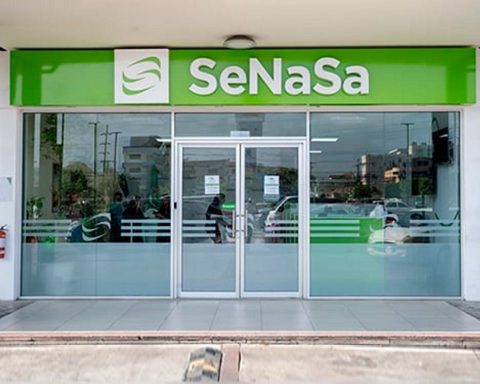New York, Sep 5 (EFE).- The New York Stock Exchange closed on Thursday in mixed territory with the Nasdaq concluding its first session of gains this month and with the market closely watching the publication of monthly employment data on Friday, which will provide clues about the health of the U.S. economy.
After the bell, the Nasdaq technology index rose 0.25% to 17,127 points; the S&P 500 index lost 0.30% to 5,503 points; and the Dow Jones Industrial Average fell 0.54% to 40,755 points.
Concerns about Wall Street are back in focus after ADP’s payroll data showed that 99,000 private sector jobs were created in August, far fewer than expected.
However, weekly jobless claims were slightly lower than expected and investors are now awaiting the US Department of Labor’s August nonfarm payrolls report, due tomorrow, which sparked fears of a recession in its weak July release.
“US employment data remains key to the trajectory of the US and, by extension, that of the global economy. And in this regard, underlying trends clearly call for caution, given that the risk of recession has undeniably increased,” says Enguerrand Artaz, a manager at Financière de l’Echiquier.
As for the sectors, red predominated with losses mainly for healthcare (-1.39%), industrial (-1.18%) and financial (-1.04%) sectors, while the most notable increase came from non-essential goods (1.41%).
Among the 30 largest listed companies on the Dow, the biggest declines were on the side of Coca-Cola (-1.92%), Amgen (-1.9%) and Unitedhealth (-1.44%), and the most significant advances were those of Amazon (2.63%) and Merck (2.41%).
Nvidia, which had plunged almost 10% two sessions ago, recovered a modest 0.94%, while Tesla rose 4.90% after announcing its full autonomous driving programme in Europe and China by early 20205.
Elsewhere, the 10-year Treasury note yield fell to 3.725 percent, gold rose to $2,546 an ounce and the euro was trading at $1.11 against the dollar.
As for Texas oil, it was barely affected by the announcement by OPEC+ that it is postponing by two months (until December) the increase in its crude oil supply planned for October, and at the close it only registered a very slight fall of 5 cents (-0.1%).

















